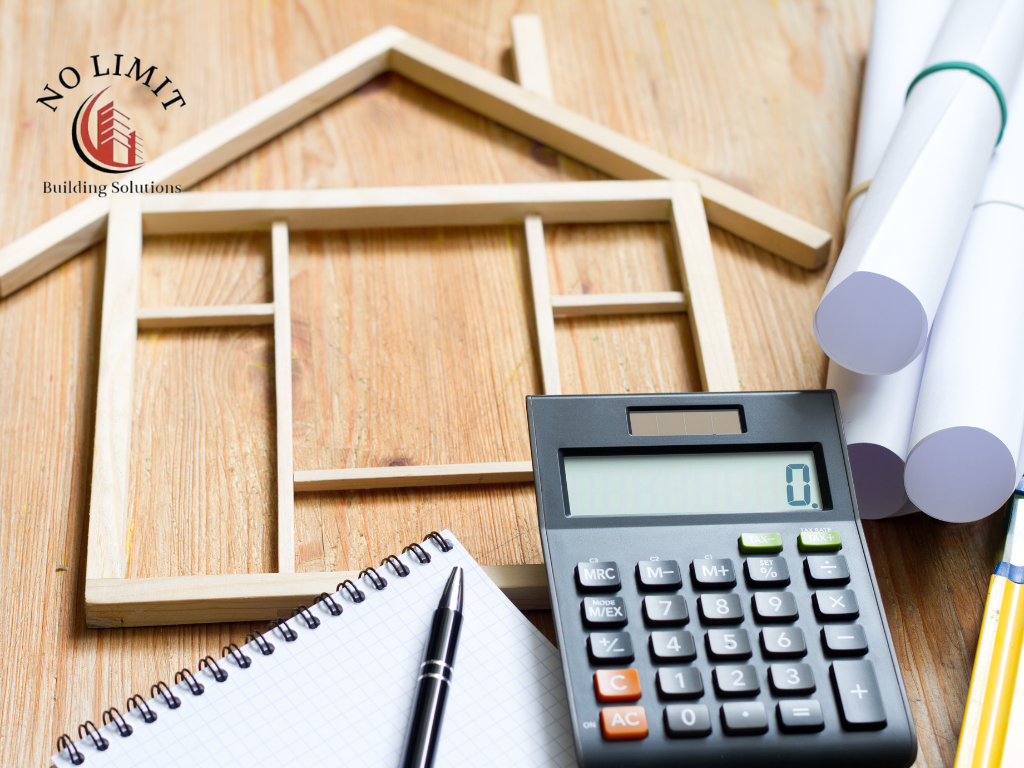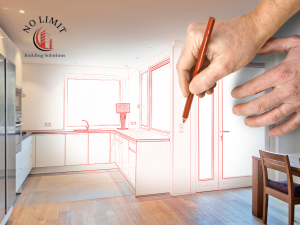Renovations home improvements are crucial for boosting the value of your property. Whether you plan to sell in the near future or simply want to enhance your living space, strategic renovations can significantly increase your home’s market appeal and resale value. Potential buyers are often willing to pay a premium for homes that are updated and well-maintained, making renovations a smart investment.
Overview of Key Areas to Focus On
To maximize the return on investment (ROI) for your renovations home project, it’s essential to focus on key areas that offer the highest value boosts. These areas typically include the kitchen, bathroom, exterior, and interior spaces. By targeting these critical parts of the home, you can ensure that your renovations make a substantial impact on both functionality and aesthetics.
High-Return Investments in Home Renovations

Kitchen Upgrades: Modernizing for Functionality and Style
The kitchen is often considered the heart of the home, making it one of the most impactful areas to renovate. High-return kitchen upgrades include:
- Modern Appliances: Installing energy-efficient, stainless steel appliances.
- Countertops: Upgrading to durable and stylish materials like granite, quartz, or marble.
- Cabinets: Refacing or replacing cabinets to provide a fresh, updated look.
- Layout Improvements: Creating an open floor plan or adding an island for additional workspace and seating.
Bathroom Renovations: Enhancing Comfort and Luxury
Bathroom renovations can greatly enhance the comfort and luxury of your home. Key improvements include:
- Fixtures and Fittings: Updating to modern, water-efficient fixtures such as rain showers and freestanding bathtubs.
- Vanities and Storage: Installing double vanities and additional storage solutions.
- Tile and Flooring: Choosing high-quality tiles and flooring that are both stylish and easy to maintain.
- Lighting: Adding task and ambient lighting to create a spa-like atmosphere.
Enhancing Curb Appeal
Exterior Improvements: Siding, Paint, and Landscaping
First impressions matter, and the exterior of your home is the first thing potential buyers see. Enhancing curb appeal involves:
- Siding and Paint: Refreshing or replacing siding and applying a new coat of paint in modern, appealing colors.
- Landscaping: Investing in professional landscaping to create a well-manicured lawn, planting trees and shrubs, and adding features like flower beds and garden paths.
- Roofing: Ensuring the roof is in good condition and considering upgrades like new shingles or a metal roof for durability and aesthetics.
Entryway Enhancements: Doors, Lighting, and Pathways
The entryway sets the tone for the rest of the home. Key enhancements include:
- Front Door: Replacing the front door with a new, energy-efficient model that complements the home’s style.
- Lighting: Installing attractive outdoor lighting fixtures to highlight the entryway and improve safety.
- Pathways: Adding or upgrading walkways with pavers, bricks, or concrete to create an inviting approach to the home.
Interior Upgrades That Pay Off

Flooring: Choosing Durable and Attractive Options
Upgrading flooring is a significant improvement that can transform the look and feel of your home. Consider:
- Hardwood Floors: Installing or refinishing hardwood floors for a timeless, high-end appearance.
- Luxury Vinyl Plank (LVP): Offering the look of wood or stone with added durability and water resistance.
- Carpeting: Replacing old carpet with new, high-quality options in bedrooms and living areas for added comfort.
Lighting: Modern Fixtures and Natural Light Solutions
Effective lighting can enhance the ambiance and functionality of your home. Focus on:
- Modern Fixtures: Updating outdated light fixtures with modern, stylish designs that provide ample light.
- Natural Light Solutions: Increasing natural light by adding windows, skylights, or solar tubes to brighten up dark spaces.
Adding Functional Space
Basement and Attic Conversions
Converting basements and attics into functional living spaces is an excellent way to add value to your home. These areas can be transformed into extra bedrooms, home offices, playrooms, or entertainment areas. When planning a conversion, consider:
- Structural Integrity: Ensure the space is structurally sound and free from issues such as dampness or leaks.
- Permits and Regulations: Check local building codes and obtain necessary permits for the conversion.
- Lighting and Ventilation: Install adequate lighting and ventilation to make the space comfortable and inviting.
- Insulation: Proper insulation is crucial to keep the space warm in winter and cool in summer.
Building Home Extensions and Additions
Adding extensions or additional rooms can significantly increase your home’s living space and market value. Key considerations include:
- Purpose of the Extension: Determine the purpose of the addition, whether it’s a new bedroom, a larger kitchen, or a sunroom.
- Design Consistency: Ensure the new addition matches the existing architectural style of the home.
- Professional Help: Hire experienced home builders and a Residential Builder to ensure the extension is built to code and blends seamlessly with the existing structure.
- Budget and Timeline: Plan your budget carefully and establish a realistic timeline for the completion of the project.
Energy-Efficient Upgrades

Insulation and Windows: Improving Energy Efficiency
Improving energy efficiency not only reduces utility bills but also makes your home more attractive to eco-conscious buyers. Focus on:
- Insulation: Upgrade insulation in the walls, attic, and floors to maintain a consistent indoor temperature and reduce energy consumption.
- Energy-Efficient Windows: Install double or triple-glazed windows to improve insulation and reduce heat loss. Look for windows with low-emissivity (Low-E) coatings to enhance energy efficiency further.
Sustainable Heating and Cooling Solutions
Incorporate sustainable heating and cooling systems to enhance your home’s energy efficiency:
- Heat Pumps: Install energy-efficient heat pumps that provide both heating and cooling.
- Solar Panels: Consider solar panels to harness renewable energy and reduce reliance on traditional power sources.
- Smart Thermostats: Use smart thermostats to optimize heating and cooling schedules, ensuring efficient energy use and reducing costs.
Working with Home Builders and Residential Builders
Selecting the Right Home Builders for Your Project
Choosing the right professionals is critical to the success of your renovation project. Here’s how to find the best home builders:
- Research and Referrals: Seek recommendations from friends, family, and online reviews. Research builders’ portfolios to assess their experience and quality of work.
- Interviews and Quotes: Interview multiple builders to discuss your project and obtain detailed quotes. Ask about their approach, timelines, and any potential challenges.
- Credentials and Licensing: Ensure the builders are licensed, insured, and have the necessary certifications to handle your renovation.
Understanding the Role of a Residential Builder
A Residential Builder plays a vital role in managing and executing renovation projects. They oversee all aspects of the construction process, from planning to completion, ensuring everything is done to code and within budget. Key responsibilities include:
- Project Management: Coordinating subcontractors, scheduling work, and managing timelines.
- Quality Control: Ensuring high standards of workmanship and compliance with building regulations.
- Communication: Keeping you informed about the project’s progress and addressing any concerns promptly.
Planning and Budgeting for Renovations

Setting a Realistic Budget
Creating a realistic budget is essential for a successful renovation. Here’s how to plan your finances effectively:
- Detailed Cost Estimates: Obtain detailed quotes for all aspects of the renovation home, including materials, labor, permits, and unexpected expenses.
- Contingency Fund: Set aside a contingency fund (typically 10-20% of the total budget) to cover unforeseen costs.
- Prioritize Projects: Focus on high-impact renovations that offer the best return on investment and align with your budget constraints.
Managing Renovation Timelines
Efficient timeline management ensures your renovation stays on track. Key steps include:
- Planning and Scheduling: Develop a comprehensive project plan with clear milestones and deadlines.
- Regular Updates: Maintain regular communication with your home builders and Residential Builder to monitor progress and address any delays.
- Flexibility: Be prepared to adjust timelines as needed to accommodate unexpected issues or changes in the project scope.




